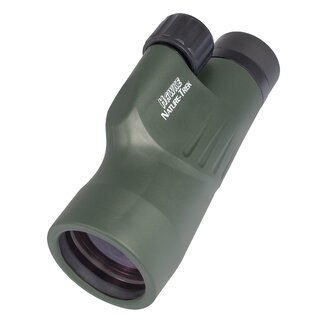If you’re interested in buying a pair of binoculars, it might be worth your while to consider a monocular instead. A monocular is essentially half a binocular, or a binocular sawed in half. You use it like a small telescope, or a spyglass.
Binoculars have the advantage that both eyes are used, and the brain integrates both images together, allowing you to see finer detail and fainter images for a given level of optical quality. But the disadvantages are also considerable.
Binoculars fail to provide this enhanced performance unless the two halves are spaced and focussed for both your eyes, a time consuming procedure that must be learned and practiced, and frequently repeated, and one that depends heavily on the mechanical design and construction of the binocular and how well they are aligned and matched. Needless to say, optimizing these mechanical considerations add to the cost of the glass without improving its optical performance in the slightest.
Since for most applications, a glass is used quickly, the ability to quickly bring it to bear on its target is often more critical than optimizing the image to perfection. For use in sports, marine, or nature study, you may simply not have the time to be fumbling around with adjusting differential focus and inter-pupillary distance. In some applications, like astronomy, binoculars are superior because of their optimal image-forming performance, and because time and convenience are not critical. But even by the telescope, sometimes you just need a quick look to familiarize yourself with a star field, and the monocular works better.
Because of the increased weight and bulk, binoculars are more of a hassle to carry in the field, harder to hold steady, and usually require both hands.
Monoculars are lighter, more robust, and cheaper than similar quality binoculars, although the value may be less. A monocular has half the materials, half the optics, and has far less matching, alignment and mechanical issues at the factory, but they don’t cost half as much as optically equivalent binoculars. I suspect the ratio is closer to 3/4. So don’t let price alone influence your decision.
When I was a pre-teen, I bought a 7×50 monocular for astronomy. It was the perfect instrument and I still have it! I use it now primarily as a night glass for marine use because of its wider field of view and stability on a moving platform. My aged pupils don’t dilate as much in dim light as they used to and can’t take advantage of the full light cone in dim light, so for all-around use I now prefer a 10×50 binocular.
But the latter is a pain to carry around and use for nature study, concerts, or to sporting events, so I have just ordered a 10×50 monocular. There is no sense in owning a toy if it is just too much trouble to take along with you.
